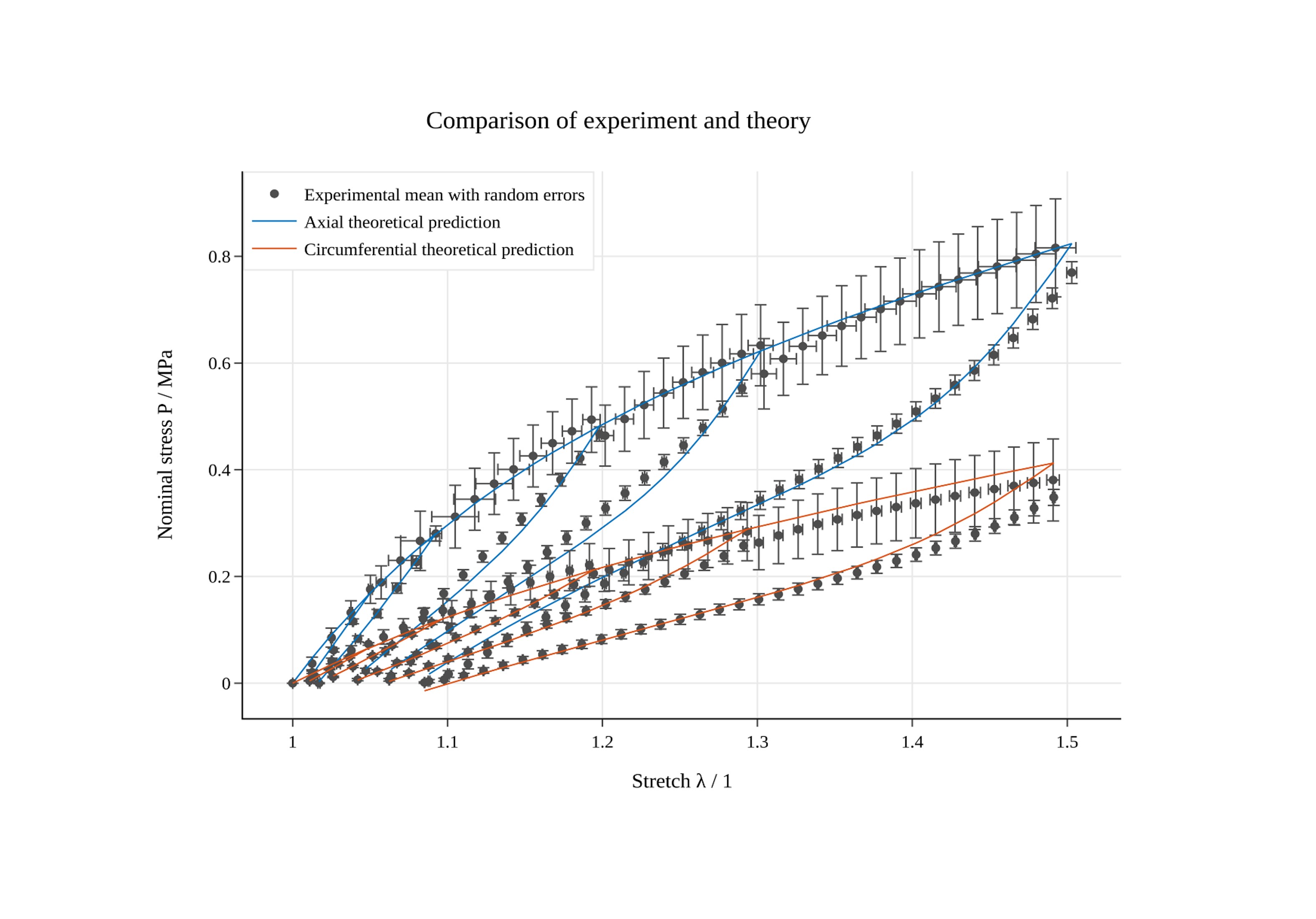The constitutive model of the scaffold material developed by the TU Graz agrees well with mechanical tests performed by Leartiker
At the TU Graz, researchers developed a constitutive model able to predict the material behavior of the scaffold material used in in-situ tissue-engineered heart valves. As revealed by different mechanical tests, which were performed by Leartiker, the material behavior of the scaffold material is governed by several interdependent nonlinear effects, in particular the Mullins effect, permanent set, anisotropy and viscoelasticity. After including these nonlinear effects into the constitutive model, the TU Graz successfully implemented the developed framework in the user-defined material subroutine of the commercial finite element software Abaqus. In the attached figure, a comparison between the experimental quasi-static stress-stretch response of the scaffold material and the theoretical prediction can be seen. From here, the required verification and validation activities will be performed in order to apply the constitutive model of the scaffold material to computational models of tissue-engineered heart valves.

